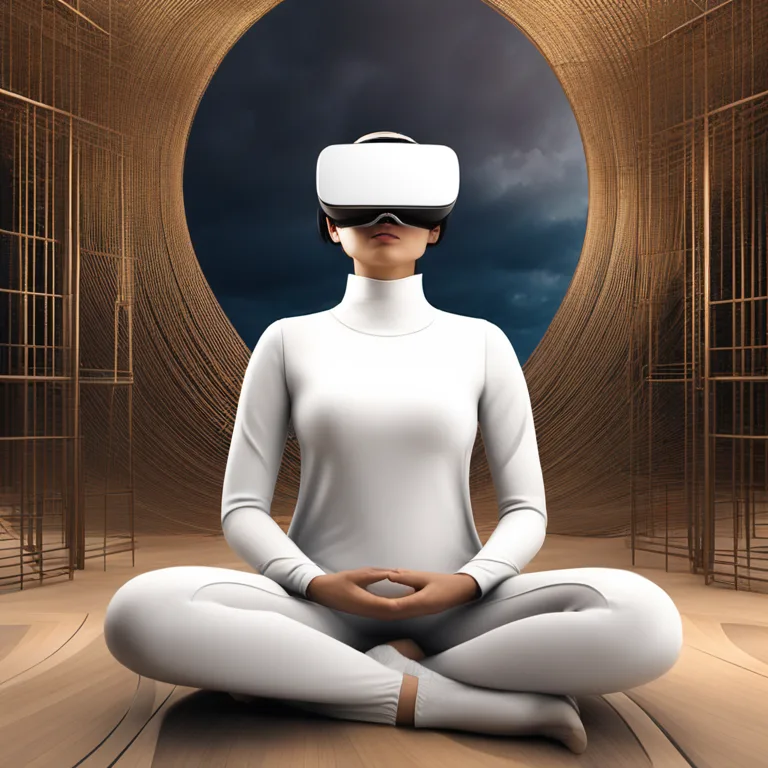
New Meditation Techniques of the Future
Discover contemporary meditation practices for a modern, mindful life.
article by Hina Kurosawa
Innovative Mindfulness
Meditation has long been recognized for its profound impact on mental wellness and spiritual development. As we step into 2024, a variety of new meditation techniques have emerged, taking advantage of the latest research in neuroscience and psychology. These techniques blend ancient traditions with state-of-the-art technology, offering practitioners novel paths to inner peace and cognitive resilience. In this article, we uncover some of the groundbreaking methods that have been gaining popularity among mindfulness communities around the globe.

Virtual Reality Immersion
One leading-edge trend is the use of virtual reality (VR) to create immersive meditation environments. This technology allows users to transport themselves to serene natural landscapes or abstract, calming spaces—all designed to enhance the quality of meditation. Scientific studies suggest that VR can significantly boost the relaxation response and help reduce anxiety levels. Users can customize their experiences, choosing from a range of visual and auditory settings to suit their preferences and goals.

Biofeedback-Enhanced Meditation
Biofeedback-assisted meditation has risen to prominence, providing meditators with real-time data on their physiological states. By wearing sensors that monitor indicators such as heart rate variability, galvanic skin response, and brainwave patterns, individuals can learn to control their body's stress response more effectively. This technique imparts a deeper understanding of the mind-body connection and fosters a more focused and efficient meditation practice.

AI-Personalized Mindfulness
Artificial Intelligence (AI) has also found its way into meditation through personalized guidance systems. These AI meditation assistants can suggest practices based on the user's mood, stress level, and even time of day. They learn from user feedback and progressively refine their recommendations, transforming generic meditation sessions into tailored experiences that evolve alongside the practitioner's personal growth.

Sound Frequency Therapy
Sound frequency therapy, particularly binaural beats, has shown promise in enhancing meditative depth. This technique plays two slightly different frequencies in each ear, which the brain perceives as a single, pulsating tone. Research indicates that binaural beats can facilitate a quicker entrance into a meditative state, stabilize the mind, and encourage neuroplasticity. Contemporary meditation spaces often integrate these soundscapes to optimize the impact of their sessions.
Community-Driven Meditation
Community-driven meditation models have sparked a new era of collective mindfulness. Utilizing social platforms, users can join live-streamed meditations led by prominent practitioners from around the world. These group sessions aim to harness the collective energy and intention of participants, often emphasizing interconnectedness and unity. Such practices empower people to establish a shared meditative space, transcending physical distances.
Mind-Expanding Psychedelic Practices
Lastly, controlled use of psychedelics in meditation practices has garnered scientific attention. With proper guidance and in safe, regulated environments, microdosing substances like psilocybin is being explored as a catalyst for profound meditative experiences. Although this approach is not for everyone and is subject to legal limitations, it represents an intersection of ancient shamanic wisdom and cutting-edge clinical research—a frontier in the realm of meditation.
Published: 12/20/2023
Modified: 12/20/2023
More predictions
Come back here soon to learn more about yourself and your future


Pregnancy Meditation Techniques
Discover serene and effective meditation techniques tailored for expectant mothers to enhance prenatal wellbeing and connect with their unborn child.


Calming The Mind With Meditation
Discover effective meditation techniques to ease your mind and promote serenity in your daily life.


Soothing Meditation Practices for Serenity
Discover effective meditation techniques to cultivate a tranquil mind and embrace inner peace in our fast-paced world.